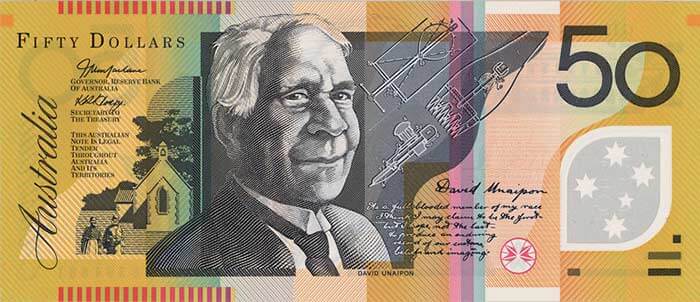|
A mother-of-three has explained why every Australian should start paying with cash instead of cards - showing that tapping for payments is taking money out of the community and giving it to banks.
In a FaceBook post that has gone viral, Brisbane woman Fiona Edmunds showed that physical money will retain it's value no matter how many times it is used.
A Brisbane mother-of-three shared an elegantly simple explanation of why cash is superior to paying by card.
'I have a $50 banknote in my pocket and I go to a restaurant and pay for dinner with it,' Ms Edmunds said in the post that more than 19,000 people have shared.
'The restaurant owner then uses the bill to pay for their laundry. The laundry owner then uses the bill to pay the barber,' she continued.
'After an unlimited number of payments it will still remain a $50 value which has fulfilled its purpose to everyone who used it for payment.'
'BUT if I come to a restaurant and pay digitally via card, the bank fees for my payment charged to the seller could be up to 3 per cent or $1.50.'
Ms Edmunds said a similar percentage is imposed on every other transaction using that original $50 if the holder pays via tap-and-go.
'Payments made by the laundry shop owner, the barber and so on. Therefore after 30 transactions the initial $50 will exist at only $5 and the remaining $45 has become property of the bank.'
While this is a simplified example and fees vary wildly between banks, the principal is sound.
With each subsequent purchase, banks and credit card companies take a small cut from the original $50 until with enough transactions, eventually it becomes theirs.
'Use it or lose it folks... cash is king,' Ms Edmunds said.
According to the Reserve Bank of Australia, fees that businesses pay banks or credit card companies to use their payment services - known as merchant fees - have on average decreased over recent years.
'However, consumers are making more payments with cards than ever before, which is raising total payment costs for merchants,' the RBA said.
'Smaller merchants also face notably higher card payment costs per transaction than larger merchants,' the central bank also noted.
This means that your local café is paying more of their income in fees than a large chain store which turns over a lot more money and can get fee reductions.
Business are allowed to pass on surcharges to customers to cover merchant fees but the amount cannot exceed the fee amount.
By Brett Lackey For Daily Mail Australia
|

